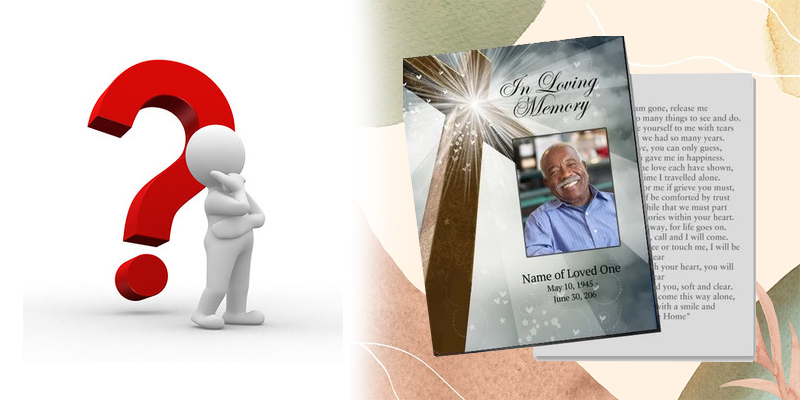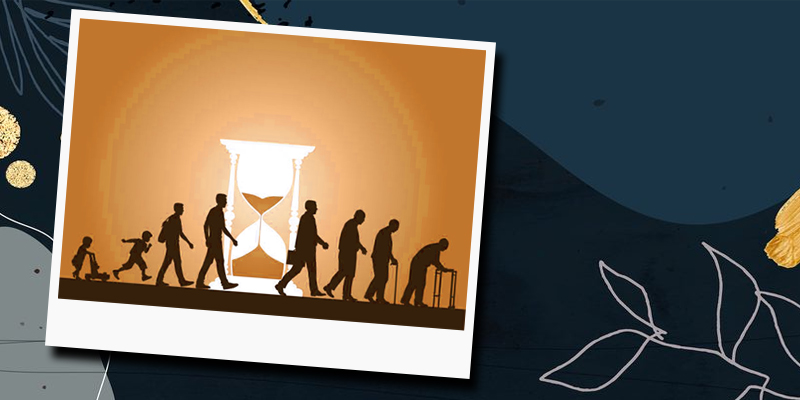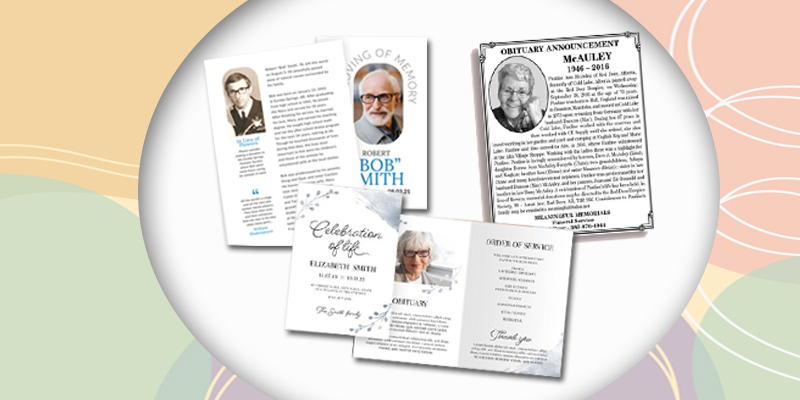Writing an obituary is a challenging, sad, and yet inspirational task. Obituaries offer a chance to tell the life story of someone and demonstrate their values and lasting contributions to family and community, as well as share biographical facts and crucial funeral information.

The level of inventiveness (and often humor) utilized within an obituary’s limited wording is typically the difference between an average obituary and a brilliant obituary. Keep it authentic to their personality, and don’t go overboard with someone else’s story.
This article will lead you through the basics of writing an obituary that reflects the soul of your loved one—or if you’re writing your own ahead of time, your own journey.
What is an obituary, exactly?
An obituary is a written notice informing others that someone has died. This announcement typically includes not only the individual’s birth and death dates but at least one photo of them, as well as highlights of their accomplishments and personality. You can also include that information in the obituary if there will be public services.
Traditionally, obituaries were published as public notices in newspapers. Obituary announcements are now available on digital news sites. Alternatively, you might have the obituary published through funeral homes or a memorial website.
How to Write an Obituary: Key Things to Note
An obituary’s principal goal is to inform others of someone’s death and honor them briefly (and publicly). A family member usually writes the obituary. However, if the person who died has no family or is estranged from his family, it may be written by a valued friend.

Because obituaries are sensitive, be sure you’re the right person to write them to. Here are a few things you should do before you start writing.
1. Make a list of the most important details first.
Even the most dramatic obituaries should provide important information about the person’s life and death. To begin with, you’ll need to gather the information you’ll need before you start writing. Typically, the following information is necessary:

- Full name of the deceased.
- When did the person die, and what was the cause of death.
- The location of the deceased’s residence at the time of death.
- The deceased’s birth date and birthplace.
- Biographical information, a life story, or significant life events (as much or as little as you choose).
- Name of key survivors; spouses, children, grandchildren, siblings, relatives; nieces and nephews, acquaintances, or pets who are survivors.
- Burial or memorial services: time, date, and location (if you want the public invited).
- Information about memorial tributes, such as donations, may be sent to such-and-such hospice or such-and-such non-profit organization in lieu of flowers.
2. Consider the following questions about your loved one.
When writing an obituary for a loved one, ensure to answer the following questions:

- How would you describe the personality of the deceased?
- What were the most common things said about him or her?
- What were the deceased’s most cherished achievements?
- Do you know the deceased’s favorite hobbies or pastimes?
- What was your favorite feature of the deceased?
- Did the deceased have any quirks or other personal characteristics that made them exceptionally special?
- How would they like to be remembered?
3. Speak to family members and friends of the deceased.
Part of what makes interesting obituaries is that they contain all of the essential details of a standard obituary and also act as a eulogy, complete with tales and character. To write an obituary like this, focus on your most vivid memories.
Talking to other family members is terrific because you’ll jog each other’s recollections. Look at what other people remember about the deceased. Those kinds of things might sometimes best describe the person’s life.
Writing An Obituary
- Death announcement
The first aspect of an obituary is the death announcement. Start with the deceased’s name, age, domicile, and the time and location of death. Some common phrases in the death announcement include “passed away,” “died,” “went to be with the Lord,” “surrounded by his or her family,” etc.
Some people believe that the word “died” is too direct, while others believe that flowery terms and euphemisms simply serve to obfuscate the reality of death. Use whatever you’re most at ease with.
Another debate is whether or not to mention the cause of death in an obituary. While you can decide not to include the cause of death, most readers will undoubtedly be interested in learning more about this. In the end, the cause of death is solely the responsibility of the immediate family. You are not obligated to add the reason for death in the obituary if you are uncomfortable doing so.
Keep in mind that if the death was unexpected, stating the reason for death, either in the obituary or in some other way, may save you from repeatedly explaining what occurred to every friend and neighbor.
- Person’s life summary
The most critical events, contributions, attributes, and connections in a deceased person’s life are recounted in an obituary. The date and place of birth; parents’ names, including mother’s maiden; date and place of marriage; the birth name of spouse; work; education; and military service are all universal milestones.

Because an obituary is not a legal document, you should use your best judgment when deciding whether a stepparent should be included as a parent, if a divorce should not be recorded, or if some experience should be deleted.
Also include a short paragraph on their hobbies, passions, or personal traits. This personal details will capture your loved one’s spirit and help others comprehend what their life was like. Make a list of their active hobbies or activities, as well as the impact they have on others.
It’s best to list events in chronological order, but don’t hesitate to put essential information first, such as marriage, even if it happened later. Outside the immediate family, a vast list of accolades and achievements is rarely of interest.
Mention noteworthy contributions and honors, but if there are a lot, choose wisely and attempt to fit as many as possible with as few words as feasible. This method works well for someone who has been involved in various service and social organizations, places of employment, hobbies, or residences.
In any case, try to be selective with the facts you include. Consider the following questions when choosing what to add:
• Would this piece of information pique the reader’s interest?
• Does it aid in the “continuation story”?
• Is the anecdote connected to something the deceased was famous for?
It’s preferable to obtain “too much” data early on, so the obituary can be shortened later.
Consider yourself a storyteller. You’re telling the deceased’s life story. You can be direct in your approach, stating one fact before the next. There is no such thing as a “correct” method for writing an obituary. Getting published sample obituaries that you like can also help you develop ideas for your own.
- Family members
Make a list of living and deceased relatives. Include the deceased’s parents, children, siblings, and full partner’s name. Grandparents, uncles, aunts, step-family, and other surviving family members should all be mentioned.
Keep track of how many grandchildren or great grandchildren they have. You are not required to list them alphabetically, but ensure to list all of them.
- Details of the funeral service or memorial service
Over the previous two decades, memorials and funeral services have evolved significantly. In fact, most families now hold a “celebration of life,” a tribute, or a balloon launch ceremony to bid farewell to loved ones.

Include any information that readers may find helpful if they wish to attend the service. The obituary should, at the very least, include the name, address, and contact details of funeral home, as well as a link to a webpage dedicated to the deceased. Other information like the time, day, date, place, and location of the memorial or funeral service should be included in the obituary.
For example, you can say, “A public memorial service will be held at ST. Anthony’s Church on July 20, 2022, at 10:00 a.m.”
You are not required to supply any information on funeral arrangements if there is no public service.
- Donations
It’s becoming more customary to ask readers to donate to a memorial fund or charity instead of sending flowers. The family has the last say. Just make sure to specify which charity or memorial funds money should be paid to. It also helps to have a physical address.
If you’d prefer monetary gifts at the funeral instead of flowers, attach a message that says “In lieu of flowers…” followed by the donation location.
Proofread the obituary.
After you’ve finished writing the obituary, go over it again to check if there are any sentence or spelling issues. Slowly read the entire obituary to identify any phrases that are misspelled or read awkwardly.
Obituaries are more than just public information. They have the potential to become lifelong mementos for those who are left behind. So, ensure the information is correct. Make sure the name of the deceased and any other family members you mention is spelled correctly.
Print your paper if you wrote it on a computer, so you can read through it and simply mark up the page with what needs to be changed.
Request that at least one trusted individual proofread the obituary for any errors or omissions. Then, as many readers might, read it aloud.
Example of an obituary
Do you want to create a fantastic obituary? Here’s an example to get you started:

Jason Crow’s love of life didn’t end with his death as a musician and retired elementary school principal. Jason died on April 13, 2021, at age 85, following a valiant fight with cancer. He was surrounded by loved ones who will continue to commemorate his memory by living to the fullest.
Jason graduated from the University of New York with a bachelor’s degree. He returned to school after ten years of teaching to earn a Master’s degree in Educational Leadership. Jason was incredibly proud of his school and his students and had shared his love of learning with hundreds of youngsters over the years.
Jason was ecstatic about the simplest joys in life. With a bottle of wine in hand, he enjoyed a nice evening with friends. Jason loved exploring the local hiking trails during his school breaks and marveled at the beauty of the spring wildflowers. He had an extraordinary ability to find joy in the simplest of tasks. His friendly demeanor spread to everyone he came into contact with. Jason leaves behind a wife, Monica; a son, Emma; a sister, Anna; and several relatives, nieces, and nephews.
Frequently Asked Questions About Obituaries
• Is it necessary to include the cause of death in an obituary?
Before releasing the cause of death, check with the spouse of the deceased or their family members. The family may wish to keep this information private in some instances. You can use phrases like “passed abruptly,” “passed after a long illness” in these instances. You can even altogether avoid the matter by not mentioning it at all.
• How should an obituary be written?
It is not appropriate to write obituaries in the first person. What this means is that you should avoid using the word “I.” Keep in mind that obituaries aren’t personal memorials.
Is It Necessary To Publicate An Obituary?
Obituary announcements are routinely published in national or local newspapers to spread the word when a loved one has gone away. Obituaries, on the other hand, do not have to be printed. Internet obituary notifications are growing increasingly popular.
What is the difference between a death notice and an obituary?
The death notice usually includes the name, age, date of birth, and date of death. An obituary usually contains more information about the person’s life and accomplishments.
